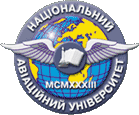Оцінювання якості зображень комп’ютерної томографії
DOI:
https://doi.org/10.18372/1990-5548.63.14495Ключові слова:
Aртефакти, медичні зображення, метрика, суб'єктивна міра, фільтр Гауса, медіаннийАнотація
Розглянуто методики оцінювання якості цифрових зображень, які спотворені артефактами. Найбільш поширеними видами артефактів є артефакти через підвищення жорсткості пучка випромінювання, ефект часткового заповнення об’єму, довільні рухи пацієнта при обстеженні та ін. Для оцінювання якості цифрових зображень застосовують кількісні і суб’єктивні міри. Запропонована комплексна оцінка якості томографічних зображень, яка базується на поєднанні двох вищевказаних метрик, що дозволить краще оцінити якість томографічного зображення і автоматизувати сам процес оцінки. Розроблено методику оцінювання якості томографічних зображень, що дозволить більш точно ставити діагноз виключивши суб’єктивізм лікаря.
Посилання
Medical Informatics: [textbook for medical students], edited by V.G. Knigavko. Kharkiv: KHNMU, 2015, 288 p. (in Ukrainian)
M. Ya. Marusina, A. O. Kaznacheeva, Modern types of tomography. Training allowance. St. Petersburg: St. Petersburg State University ITMO, 2006, 132 p.
O Watzke, “A pragmatic approach to metal artifact reduction in CT: merging of metal artifact reduced images,” European Radiology, 14: 849–856, 2004. https://doi.org/10.1007/s00330-004-2263-y
Wang X., Tian B., Liang C., Shi D. Blind Image Quality Assessment for Measuring Image Blur // Congress on Image and Signal 2008 Congress on Image and Signal Processing, 2008. https://doi.org/10.1109/CISP.2008.371
X. Li and J. Cai, “Robust transmission of JPEG2000 encoded images over packet loss channels,” Multimedia and Expo, 2007 IEEE International Conference on, IEEE, 2007, pp. 947–950. https://doi.org/10.1109/ICME.2007.4284808
N. Thomos, N. V. Boulgouris, and M. G. Strintzis, “Optimized transmission of JPEG2000 streams over wireless channels,” IEEE Transactions on image processing, vol. 15no. 1, 2006, pp. 54–67. https://doi.org/10.1109/TIP.2005.860338
A. Hore and D. Ziou, “Image quality metrics: PSNR vs. SSIM,” Pattern recognition (icpr), 2010 20th international conference on. IEEE, 2010, pp. 2366–2369. https://doi.org/10.1109/ICPR.2010.579
A. G. Volkov and O. V. Krasnopolsky, Additional opportunities to reduce errors in the radiological diagnosis of frontal sinusitis: The collection of materials of the medical scientific-practical conference dedicated to the 80th anniversary of the city hospital №1. Rostov-on-Don, 2012. (in Russian)
L. S. Chow and R. Paramesran, “Review of medical image quality assessment,” Biomed. Signal Process. Control, vol. 27, pp. 145–154, 2016. https://doi.org/10.1016/j.bspc.2016.02.006
X. He and S. Park, “Model observes in medical imaging research,” Theranostics, vol. 3, no. 10, pp. 774–786, 2015. https://doi.org/10.7150/thno.5138
A. Mason, N. Murtha, J. Rioux, S. Clarke, C. Bowen, and S. Beyea, “Pharmocokinetic Parameter Accuracy Correlates with Image Quality Metrics in Flexible Temporal Resolution DCE-MRI,” in Proc. Intl. Soc. Mag. Reson. Med., 2019, p. 535.
H. Jeelani, J. Martin, F, Vasquez, M. Salerno, and D. S. Weller, “Image Quality Affercts Deep Learning Reconstruction of MRI,” in 2018 IEEE 15th International Symposium on Biomedical Imaging ISBI, 2018, pp. 357–360. https://doi.org/10.1109/ISBI.2018.8363592
A. S. Chandhari et al, “Super-resolution musculoskeletal MRI using deep learning,” Magn. Reson. Med., vol. 80, no. 5, pp. 2139–2154, 2018. https://doi.org/10.1002/mrm.27178
B. A. Duffy, “Retrospective correction of motion artifact affected structural MRI images using deep learning of simulated motion,” Med Imaging with Deep Learn., no. Midl 2018, pp. 1–8, 2018.
H. Zheng et al., “Multi-Contrast Brain CT Image Super-Resolution with Gradient-Guided Edge Enchancement,” IEEE Access, vol. 6, pp. 57856–57867, 2018. https://doi.org/10.1109/ACCESS.2018.2873484
##submission.downloads##
Номер
Розділ
Ліцензія
Authors who publish with this journal agree to the following terms:
Authors retain copyright and grant the journal right of first publication with the work simultaneously licensed under a Creative Commons Attribution License that allows others to share the work with an acknowledgement of the work's authorship and initial publication in this journal.
Authors are able to enter into separate, additional contractual arrangements for the non-exclusive distribution of the journal's published version of the work (e.g., post it to an institutional repository or publish it in a book), with an acknowledgement of its initial publication in this journal.
Authors are permitted and encouraged to post their work online (e.g., in institutional repositories or on their website) prior to and during the submission process, as it can lead to productive exchanges, as well as earlier and greater citation of published work (See The Effect of Open Access).

